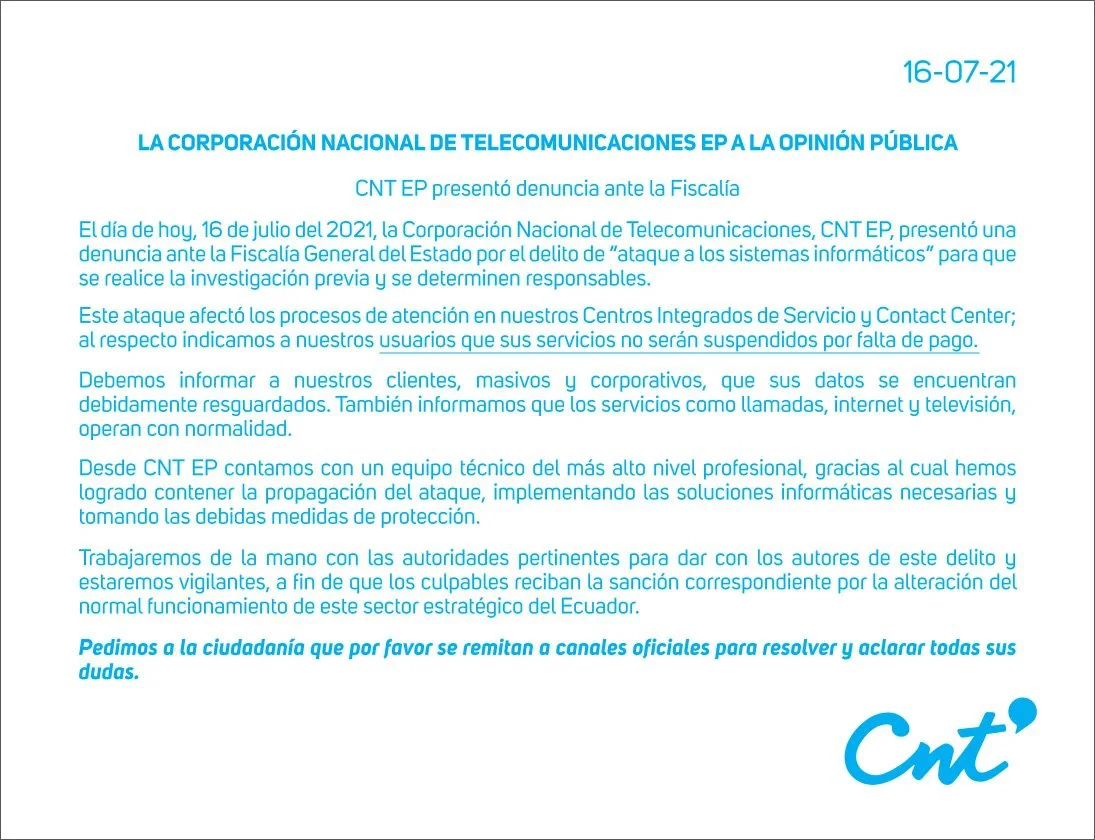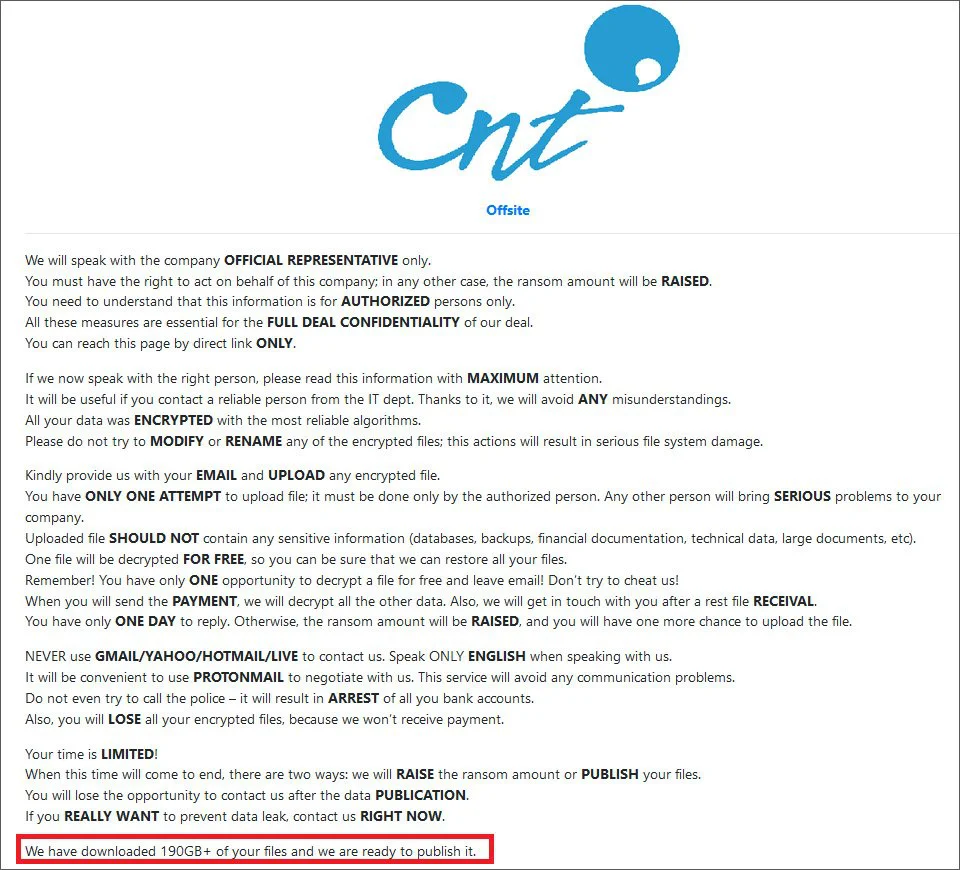KEEP IN TOUCH
Subscribe to our mailing list to get free tips on Data Protection and Cybersecurity updates weekly!







Ecuador’s state-run Corporación Nacional de Telecomunicación (CNT) has suffered a ransomware attack that has disrupted business operations, the payment portal, and customer support.
CNT is Ecuador’s state-run telecommunication carrier that offers fixed-line phone service, mobile, satellite TV, and internet connectivity.
Starting this week, the CNT website began displaying an alert warning that they suffered an attack and that customer care and online payment are no longer accessible.

“Today, July 16, 2021, the National Telecommunications Corporation, CNT EP, filed a complaint with the State Attorney General’s Office for the crime of “attack on computer systems “so that the preliminary investigation is carried out and the responsible,” read the alert translated into English.
“This attack affected the care processes in our Integrated Service Centers and Contact Center; In this regard, we indicate to our users that their services will not be suspended for non-payment.”
“We must inform our clients, massive and corporate, that their data is They are duly protected. We also inform that services such as calls, internet and television, operate normally.”
If you have first-hand information about this or other unreported cyberattacks, you can confidentially contact us on Signal at +16469613731 or on Wire at @lawrenceabrams-bc.
Also Read: The 5 Phases of Penetration Testing You Should Know
While CNT has not officially stated that they suffered a ransomware attack, BleepingComputer has learned that the attack was conducted by a ransomware operation known as RansomEXX.
Security researcher Germán Fernández shared with BleepingComputer a hidden link to the group’s data leak site that warns CNT that the gang would leak data stolen during the attack if CNT did not pay a ransom.
“Your time is LIMITED!
When this time will come to end, there are two ways: we will RAISE the ransom amount or PUBLISH your files.
You will lose the opportunity to contact us after the data PUBLICATION.
If you REALLY WANT to prevent data leak, contact us RIGHT NOW.We have downloaded 190GB+ of your files and we are ready to publish it.” – RansomEXX.

This page is currently hidden from the public and can only be accessed via the direct link. These hidden pages are commonly included in ransom notes to prove that a ransomware operation stole data during an attack.
In CNT’s press statement, the company states that corporate and customer data are secure and have not been exposed.
However, the RansomEXX gang claims to have stolen 190 GB of data and shared screenshots of some of the documents on the hidden data leak page.
The screenshots seen by BleepingComputer, include contact lists, contracts, and support logs.
This ransomware operation is responsible for numerous high-profile attacks, including Brazil’s Rio Grande do Sul court system, nuclear weapons contractor Sol Oriens, and JBS, the world’s largest meat producer.
The ransomware operation originally launched under the name Defray in 2018 but became more active in June 2020 when it rebranded as RansomEXX and began to target large corporate entities.
Like other ransomware gangs, RansomEXX will compromise a network through purchased credentials, brute-forced RDP servers, or by utilizing exploits.
Once they gain access to a network, they will quietly spread throughout the network while stealing unencrypted files to be used for extortion attempts.
After gaining access to an administrator password, they deploy the ransomware on the network and encrypt all of its devices.
Also Read: Got Hacked? Here Are 5 Ways to Handle Data Breaches
As is becoming common among ransomware operations, RansomEXX created a Linux version to ensure they can target all critical servers and virtual machines.
The RansomEXX gang’s has a history of high-profile attacks, including Brazil’s government networks, Texas Department of Transportation (TxDOT), Konica Minolta, IPG Photonics, and Tyler Technologies.
BleepingComputer has contacted CNT with further questions but has not received a response at this time.